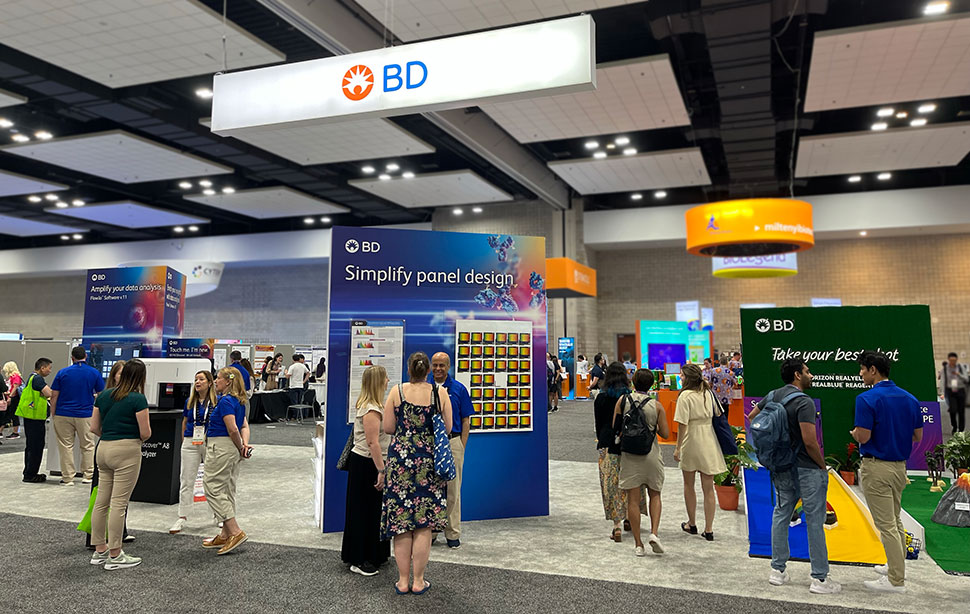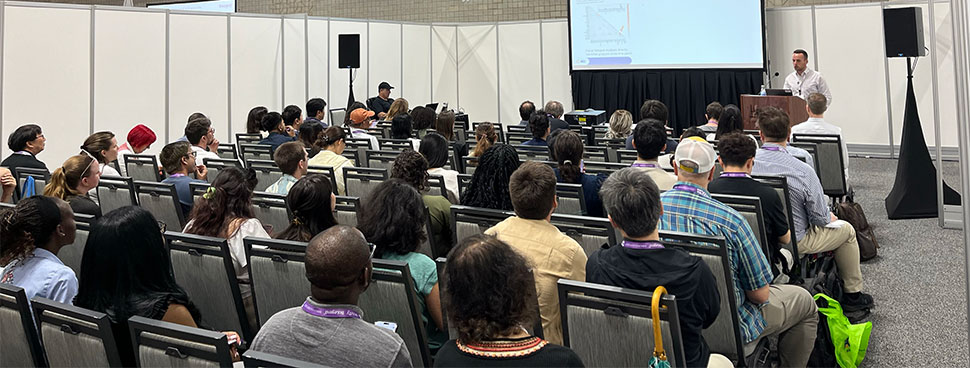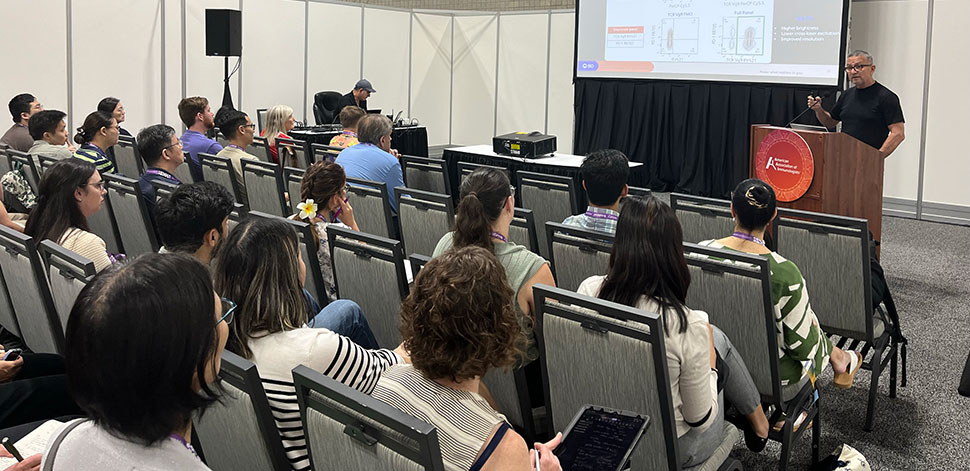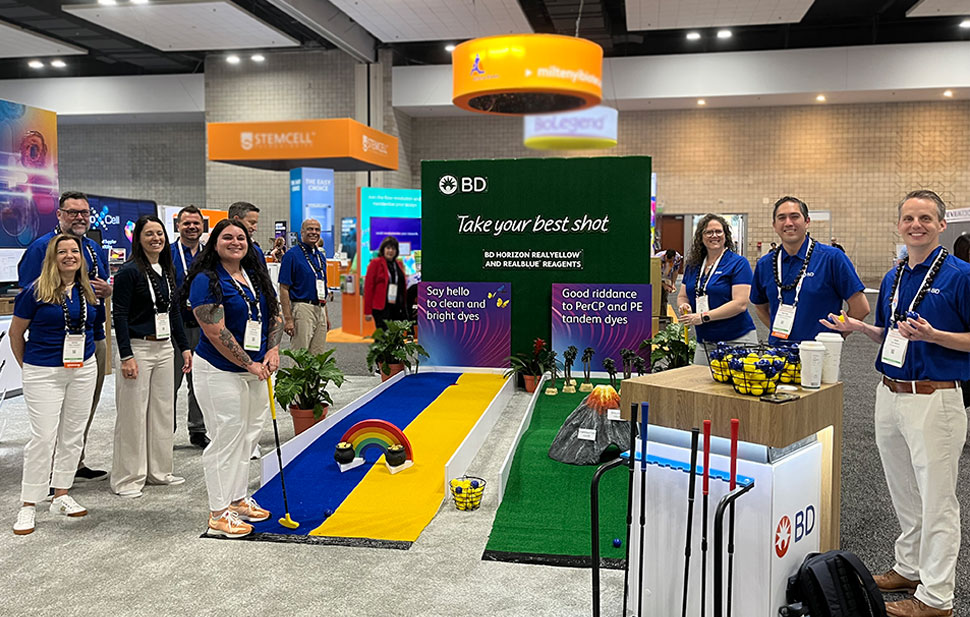Powering What Matters in Immunology Research: BD Biosciences Unveils Innovative Flow Cytometry Solutions at AAI 2025
June 03, 2025
Set against the stunning backdrop of Honolulu, the annual meeting of the American Association of Immunologists offered a wealth of opportunities to young scientists and expert immunologists alike. The event featured a comprehensive array of activities, including presentations on groundbreaking research and innovative technologies, educational workshops and sessions, scientific exchange through poster sessions, recognition of outstanding immunologists and fun networking events. One of the highlights of the event was a Major Symposium co-chaired by Dr. Shimon Sakaguchi, featuring presentations on FoxP3+ regulatory T cells. He concluded the session with a talk reflecting on his pioneering work from two decades ago that led to the discovery and functional characterization of FoxP3+ regulatory T cells.
Integrating single-cell sequencing and analysis into immunology workflows
Scientists worldwide eagerly explored various realms of immunology, with T cell and B cell signaling dominating discussions at this year's AAI meeting. A broad range of topics from molecular mechanisms of inflammation, immune development and autoimmunity to immune regulation and cancer were discussed at length. The preponderance of single-cell sequencing and data analysis-related studies in the more than 2,300 posters presented at AAI underscored the shift towards the wide adoption of single-cell multiomics analysis in immunology research.
Focusing on tools and solutions that make a difference in immunology research
Leading the pack with those emerging trends, BD Biosciences presented comprehensive solutions to the scientific community at AAI this year. These solutions include high-performance fluorochromes to simplify panel design, advanced flow cytometers with state-of-the-art technology that enable previously difficult experiments, high-parameter analysis panels and kits for single-cell analysis, and intuitive data analysis tools.

Workshops on data science workflows for high-dimensional single-cell analysis and fluorochrome selection in flow cytometry panel design draw attention at AAI
The highly popular topic of high-dimensional single cell analysis attracted a packed audience at the workshop conducted by Nicolas Loof, Informatics Solution Leader, and Devon Jensen, Associate Director of Bioinformatics at BD Biosciences. The speakers showcased advanced data science workflows for flow cytometry and single-cell analysis using various tools. They demonstrated examples of flow cytometry panel design using BD® Research Cloud and analysis employing FlowJo™ Software v11 and secondary analysis and visualization of single-cell multiomics data with BD Cellismo™ Data Visualization Tool. These sessions provided comprehensive insights into the integration of data science in multidimensional analyses of immunologically relevant samples, pushing the boundaries of current methodologies in flow cytometry, protein expression, and genomics through sequencing.

The workshop by Robert Balderas, VP of Biological Sciences at BD Biosciences, was as popular as ever. His talk emphasized the critical impact of fluorochrome selection in flow cytometry. He discussed how the choice of fluorochrome-conjugated antibodies is crucial in deciphering the signals of the presence and relative expression of antigens in cells and emphasized how the differences in fluorochrome characteristics, such as brightness and stability can significantly influence the performance of flow cytometry panels. He shared data demonstrating how choosing the BD Horizon RealBlue™ and BD Horizon RealYellow™ Fluorochromes enhanced data quality and experimental outcomes. Several new dyes with laser-specific excitation and reduced spillover were introduced as effective alternatives to PerCP and PE in panel design.

AAI-BD Biosciences Investigator Award
In keeping with the tradition, several scientists were honored at the 2025 AAI Career Awards presentation. This year, the prestigious AAI-BD Biosciences Award was bestowed upon Dr. Noah Palm, from Yale University, School of Medicine. The award recognizes a scientist for their noteworthy early career achievement in immunology research.
Taking the best shot at panel design
Continuing the tradition of making visits to the BD booth both fun and educational, the BD Biosciences team invited attendees to take a swing inside the booth. This activity cleverly connected the fun of golf with the intricacies of flow cytometry panel design. The result – they were not just sinking the shot, but were also learning tips on how to easily build a flow cytometry panel. Scientists who have been using PerCP and PE tandem dyes for panel design were well aware of the various challenges related to designing flow cytometry panels with traditional fluorochromes. So, when they saw the golf course where their ball had to pass the “compensation cave”, conquer “spillover hill” and navigate the “vegetation barriers” to get to the hole, they understood the parody clearly. In contrast, the alternate course with the BD Horizon™ Real Yellow and the BD Horizon™ Real Blue Fluorochromes, was clear with no impediments, allowing participants to enjoy a straightforward shot. Using a handy fluorochrome performance chart, BD scientists explained how to select fluorochromes that deliver minimal spillover and appropriate resolution easily for both conventional and spectral flow cytometry experiments. With scientists eagerly taking their best shots on the “mini golf course” at the booth, needless to say that the BD golf course was a major attraction at AAI this year!

Poster presentations focusing on a range of relevant topics
In addition to the educational workshops, BD scientists presented several posters at AAI. Analysis of T cell heterogeneity and NK cell deregulation in multiple myeloma and detection of low-expressing CAR-T cells were a few among the topics covered in posters. CITE-Seq was another popular topic in scientific posters. Many posters showcased single-cell multiomics solutions such as the use of full-length TCR/BCR and CITE-Seq analysis for T cell and B cell characterization, exploring full-length T cell receptor sequencing and CITE-Seq for characterizing pathogenic T cells and using a microwell-based CITE-Seq assay for achieving cost efficiency in immune profiling were presented.
Check out and download all the posters presented at AAI.
